A couple weeks ago, a group of us had the opportunity to witness the site of one of the most seminal battles of World War II. Officially it was named the Battle of the Ardennes by the US Army and Operation Wactch am Rhein by the Germany military, but popularly known as the Battle of the Bulge.
It’s a violent tale from history that happened right in our backyard. We had the opportunity to listen to a lecture by an American and Belgian historian. They provided us with background knowledge and pictures from the pivotal time before, during and after arguably the most important battle of the European theater in WWII.
For those that aren’t well versed in 20th century military history, please allow me to provide you with a thumbnail sketch of this titanic clash.
Toward the end of 1944, the allied advance through Europe had been faster than expected and stretched the forces out over a large expanse of the continent. This presented a severe logistical problem for the Allies and coupled with the failure of Operation Market Garden (British Field Marshall Montgomery’s failed attempt to bypass the Siegfried Line and cross the Rhine), presented a very tempting target to Hitler and the German commanders. So, the German military decided to try and split the American and British forces, in the hope that Germany could force both the US and UK to seek peace independent of the USSR in the East, thus giving Germany more time to complete their extensive work on secret weapons like jet aircraft, super heavy tanks/U-Boats and of course, nuclear weapons.
This belief sparked Hitler to try another Blitzkrieg (Lightning or Flash War) maneuver to encircle four Allied Armies and retake the Belgian port of Antwerp. This would mirror what the German Army did in 1940 during the successful Battle of France. The difference this time would be instead of using the Ardennes forest to cover the advancing German army, it would be the site of the battle. The close terrain of the forest made rapid movement difficult, which was ideal to trap an army (or armies) in the dense woods.
In order to achieve success, the German High Command needed to achieve complete surprise. Also, the weather had to be poor to neutralize the deadly air superiority. The German advance had to be quick to encircle and trap the allied armies and the Allied fuel supplies had to be captured intact, since the air raids in Romania had starved the German military machine of its lifeblood.
The Allied armies also suffered from a recent lack of intelligence. All through the campaigns in France and Italy, the Allies were able to intercept and decrypt ULTRA intelligence from German radio transmissions with the help of an Enigma machine. As they crossed into German territory though, the German army didn’t rely on the radio, but land lines which weren’t as easy to decipher. The very helpful French resistance was unable to supply information about the German homeland for obvious reasons as well. Finally, a foggy autumn also hampered the Allied forces from correctly assessing the situation.
Popular belief was that the German army was in no state to wage an offensive. Also, the Ardennes was considered a quiet sector, so it was used as a training ground for new units and a rest area for those that hard seen hard action.
This was soon to change.
On December 16th, the battle began. It was a multi-pronged attack, with paratroopers, infantry and armored cavalry, along with special tactics like Otto Skorzeny’s battalion of English speaking Germans. Their goal was to take vital bridges over the Muese River. Although they failed at that, they did produce great chaos and inflicted much damage on the logistics of the Allies. Checkpoints were set up all over the rear and servicemen were grilled on all things American. For example, what was the identity of Mickey Mouse’s girlfriend, baseball scores, or the capital of Illinois. That last question resulted in the temporary detention of General Omar Bradley. Although he correctly answered Springfield, the soldier asking seemed to think the correct answer was Chicago. Apparently American geography wasn’t the best back then either!
Unfortunately, when the main armored spearhead of the Sixth SS Panzer Army met the lightly armored American 285th Field Artillery Observation Battalion, there was very little contest and the Americans surrendered to the overwhelming German force. About 150 unarmed men were herded into an open field near Malmedy, Belgium. Although no official order appears to have been given, the Germans opened fire and cut down the American troops. Then, several went through the survivors and methodically spotted those still alive. Fortunately, a few escaped to bring the tale back to the others. This story spread like wildfire and similar to the Alamo or USS Maine became a rallying cry. It also led to the common practice of not taking prisoners.
This is an image from that massacre in 1944.
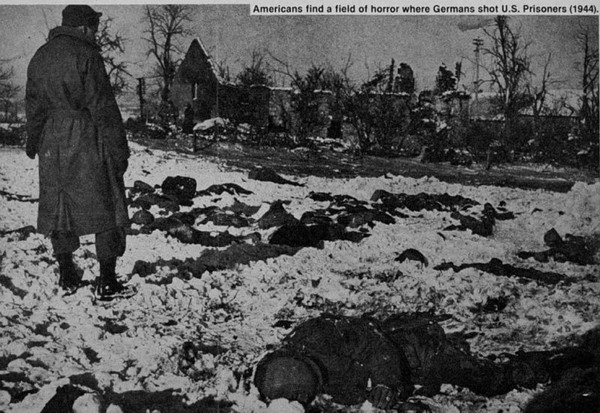
Today, outside of Malmedy, the field of the massacre is still just a field, but there is also a museum and two memorials to commemorate what happened. Here are a couple images of that memorial.
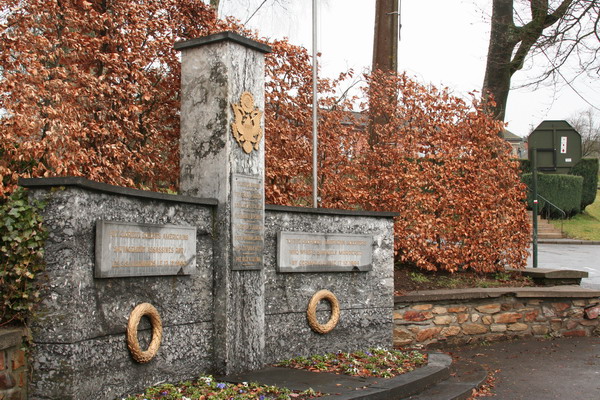
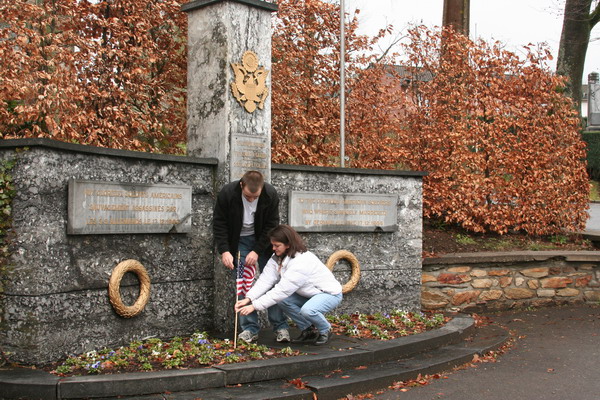
Several of the towns in the area still have reminders of the battle.
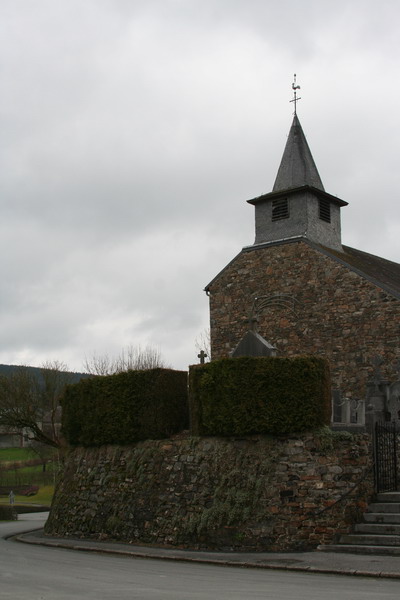
This 640 horse power, 50-ton, Tiger I Tank is another visual reminder of the power of the German military. It was a fearsome adversary.
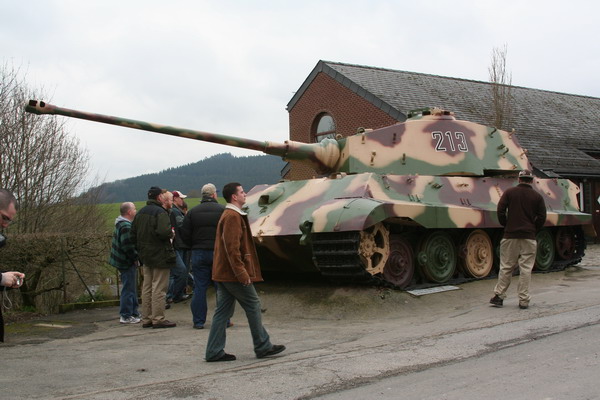
Of course, even in the midst of documenting this battle, flowers are a strong symbol of peace and regeneration.

Our next stop was to witness the result of the ferocious battle, the Ardennes American Military Cemetery. This 90-acre memorial is the final resting place for 5,329 American service members, many of whom died in the Battle of the Bulge. You can see the American Eagle, a 17 foot high symbol of the American military. Beside it are three figures representing Justice, Liberty and Truth. The thirteen stars on the other side, represent the original colonies of the US.
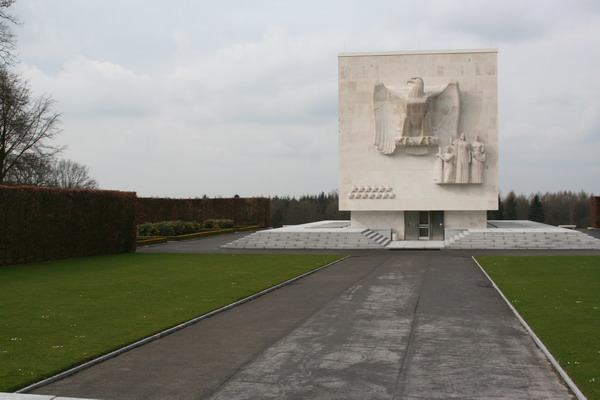
This sign shows that dogs are prohibited (even on a leash) and silence and respect are strictly enforced.
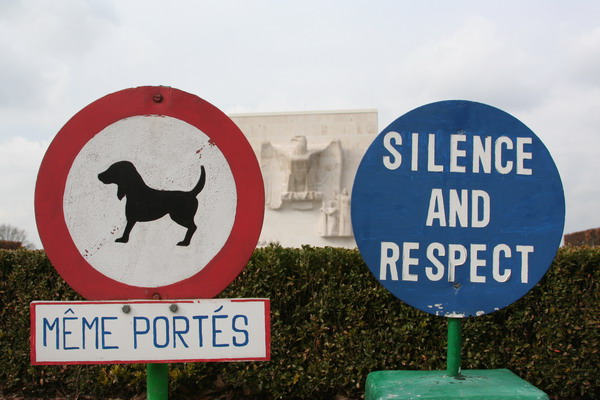
This relief map shows the bulge in the operation. Also, at the crossroads in the lower right corner is the town of Wittlich, near where we live.
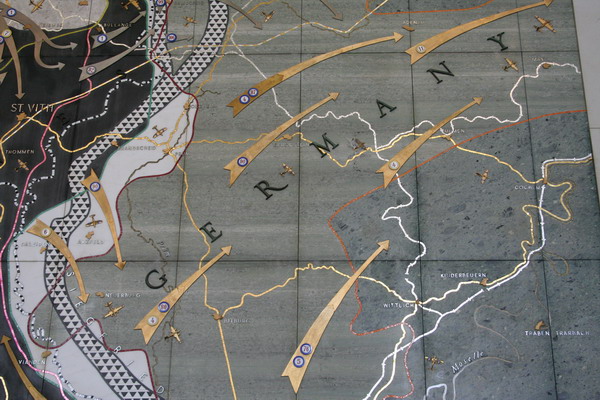
This legend depicts who was involved in the battle.
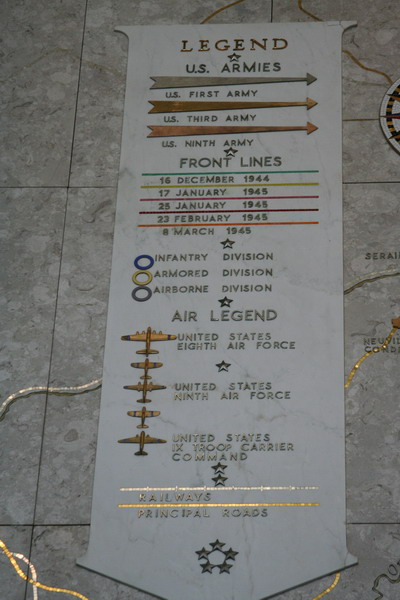
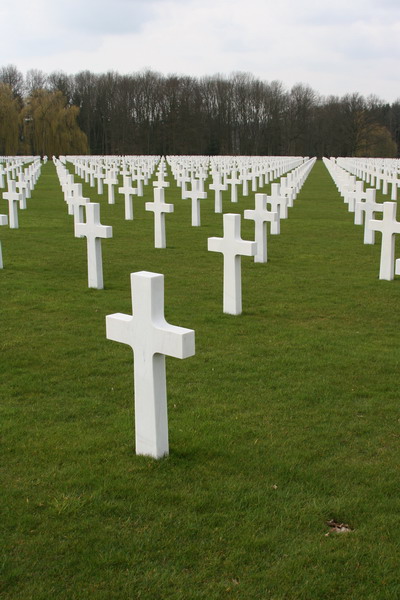
The several images below depict the grave sites. The overall layout is in the shape of a Greek Cross. Sixty percent of those buried here were Airmen. So, it made for a particularly poignant stop.
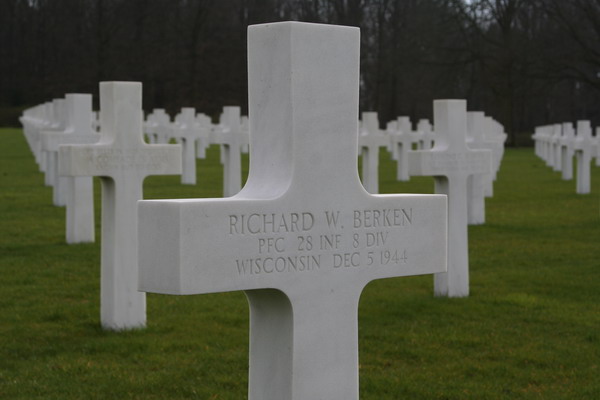
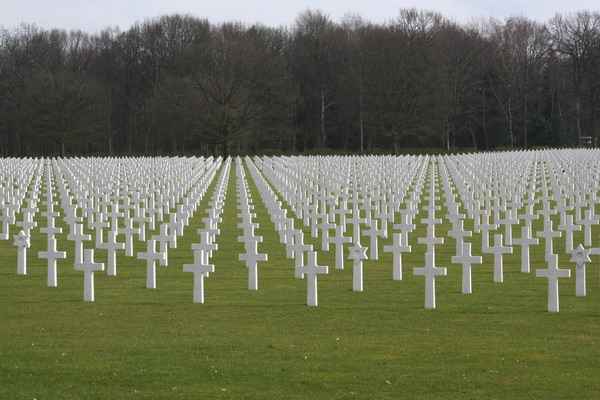
Here is another view of the Stars, Eagle, Justice, Liberty and Truth.
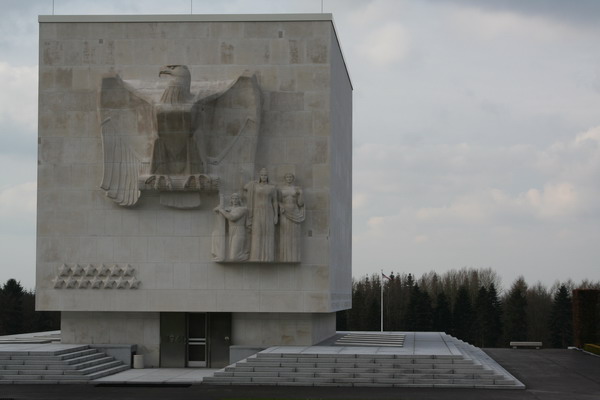
It was a very historic day. I am always humbled to take part in activities like this. A day to remember our past and not forget what it means to be an American service member.
So, until the next adventure … back in France.
–Jim
1 thought on “Battle of the Bulge or Operation Wacht Am Rhein”
Comments are closed.

I have to ask – is all of this knowledge written from memory or are you referencing articles, websites, etc.
You are one of the smartest people I’ve ever met but after reading all the tiny details, I just had to ask.
Hope you two are fantastic!! You must be getting excited for Julie’s wedding.
Til next time…
Kelly